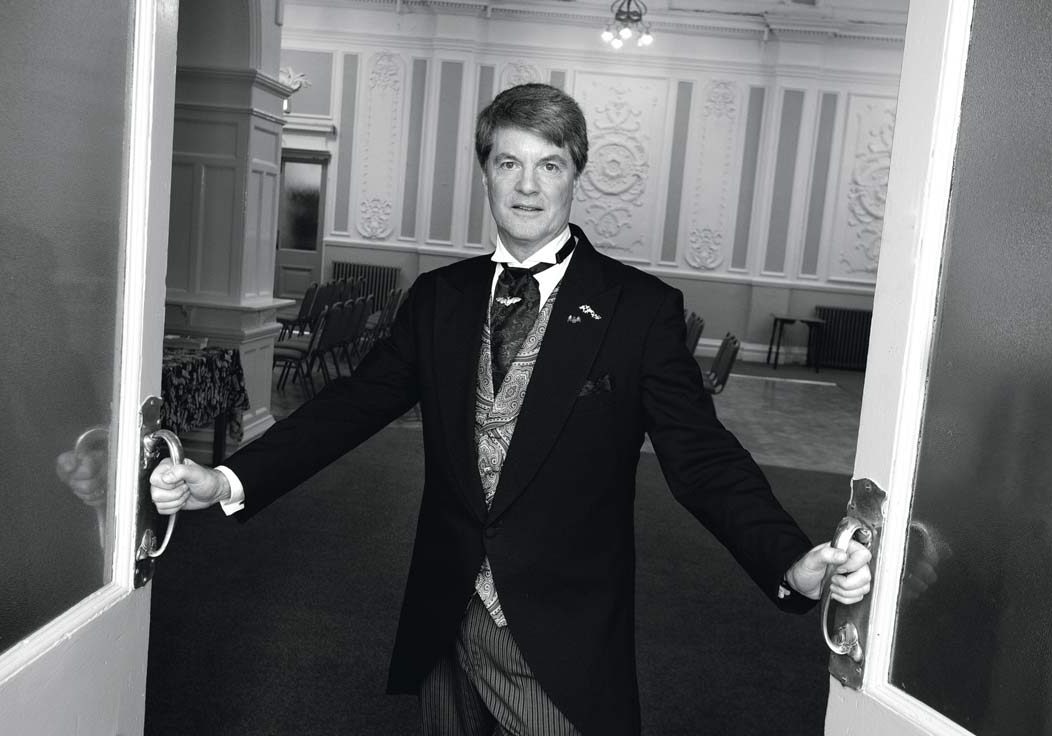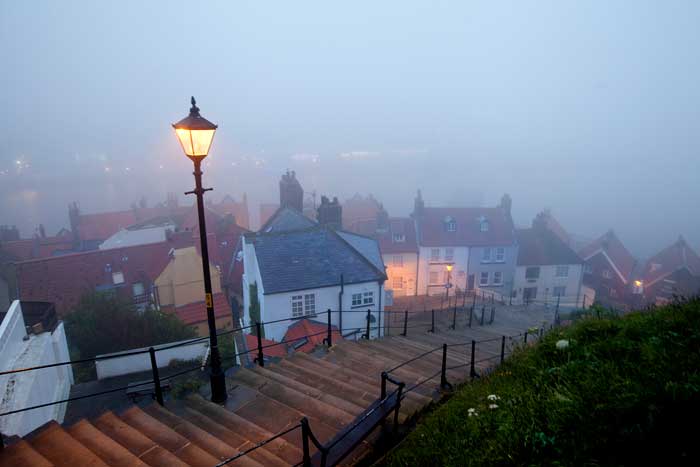
Dacre Stoker on the mysteries behind the writing of Dracula
by Mark Davis
Canadian author Dacre Stoker is the great-grand nephew of Bram Stoker, author of the classic Gothic horror novel Dracula. He is an authority on his famous forbear, giving multi-media presentations about Stoker and Dracula. He’s the co-author of Dracula the Un-Dead and The Lost Journal of Bram Stoker and is currently working on a prequel to Dracula, a work of historically based fiction on Bram’s life and family. Dacre shares his thoughts on Bram on his recent visit to Whitby, where Stoker on Stoker, The Mysteries Behind the Writing of Dracula, was part of the Goth Weekend festivities.
“It’s a pretty scary place when the fog rolls in and the shadows get long”
It’s always a great feeling coming back to Whitby. I just absorb the atmosphere of what Bram may have felt when he came here to relax while on holiday and to get creative with his writing process.
When I research here I feel there’s a part of Bram in me. I have some of the same attraction that Bram had for this lovely town. When I come here I start thinking more clearly and more creatively.
I think a lot like Bram did. I feel strongly that he was turned on by the presence of water and the life that goes with it. It was a major part of his life; Clontarf, Cruden Bay, Greystones, Whitby, these places got him into the mode of writing. The Demeter (the ship that brings Dracula to Whitby) is a big part of the story. Whitby is the entry point for Count Dracula, and there’s also the sinister side of Whitby at nighttime. Not wanting to scare off the tourists, but it’s a pretty scary place when the fog rolls in and the shadows get long, and you walk the narrow streets and the cobblestones… the perfect setting for a vampire story.

Fog creeps up Whitby’s famous 199 steps
Bram’s legacy is more evident during the Whitby Goth weekend when you see other people come to enjoy it and dress up and feel it, and promenade through town as the Victorians did. Whitby jet became popular when Queen Victoria wore it as mourning jewellery. It’s part of a burial ritual and a mourning routine.
I wouldn’t have got into writing if I didn’t have the Stoker legacy. I initially got interested because of our collection of Bram’s books on the bookshelf in my childhood home. Their presence caused me to want to find out a little bit more about my family legacy.
My wife and I like to look into genealogy, and the more we dug into it, the more Bram and his immediate family became very interesting relatives. I was a school teacher and I have been interested in how people develop, both in sport and in the classroom. I am interested in what makes somebody tick; it helps when trying to get the best out of them. So I set my sights on what made Bram Stoker tick. Why did he write Dracula? What was inside his head? This is my quest, to find the inner Bram Stoker.
Bram travelled with famous actor Sir Henry Irving whilst writing his book. He went to America eight times, and through parts of Europe. Irving was lucky to have Bram, they complemented each other. They each had traits and skills that the other needed to be successful. Irving’s death in 1905 was life changing for Bram and unfortunately his life soon went downhill. I think there’s a little bit of Irving in Count Dracula, the tall strong leader, the man who required a lot, the man who lived a night life.
The first seeds of Dracula were sown from personal experience of stories about premature burial of people during the cholera epidemic in Ireland in 1832. His mother told him how people in Sligo, her town, had been prematurely pushed into a hole in the ground and crawled their way out.
At one stage they had bells put on the outside of coffins, and laws in place that in the death house, you had people lying out for two days with bells on their fingers or toes, so if they came ‘back to life’ they would ring, because people were scared of premature burial.
“The first seeds of Dracula were sown from personal experience, about stories of premature burial”
When you think of the cholera time in Charlotte Stoker’s stories, the first people to die were the trained medical people because they were the first ones on the scene, all catching the same disease. So it’s the people who were not medical, the drunken street ladies that were caring for the sick. What did they know about how to take a pulse or to determine if somebody’s in a catatonic state? They would just push them into the ground and take no chances.
In the Middle Ages when corpses were dug up as suspected vampires, villagers would come across a pretty gruesome scene. The body would be bloated, they would have rosy cheeks, liquid coming out of the sides of their mouth and their nose. It’s such an unusual thing for the living to see. Not many people would actually witness the decomposition process. The next step would be to keep the suspected vampire in the ground, so they would drive a stake through their heart to pin them to the ground.
 That was a seed, but it wasn’t until Bram was actually in the British Museum library that he found the Emily Gerard essay entitled Transylvanian Superstitions. In an interview he gave to Jane Stoddard, British Weekly, just two months after Dracula was published, he talked about the Gerard essay being the best source, and about Rev. Sabine Baring Gould writing a book about werewolves, which also involves superstition and mythology. He also mentioned eleven other countries that he found which had certain versions of vampire like creatures in their mythology; “China, Iceland, Germany, Saxony, Turkey, the Chersonese, Russia, Poland, Italy, France, and England, besides all the Tartar communities”. Somewhere in between he read John Polidori’s The Vampyre, Joseph Sheridan Le Fanu’s Camilla, so it was not all his own
That was a seed, but it wasn’t until Bram was actually in the British Museum library that he found the Emily Gerard essay entitled Transylvanian Superstitions. In an interview he gave to Jane Stoddard, British Weekly, just two months after Dracula was published, he talked about the Gerard essay being the best source, and about Rev. Sabine Baring Gould writing a book about werewolves, which also involves superstition and mythology. He also mentioned eleven other countries that he found which had certain versions of vampire like creatures in their mythology; “China, Iceland, Germany, Saxony, Turkey, the Chersonese, Russia, Poland, Italy, France, and England, besides all the Tartar communities”. Somewhere in between he read John Polidori’s The Vampyre, Joseph Sheridan Le Fanu’s Camilla, so it was not all his own
unique creation. Other writers have done their work and created vampires in literature, but Bram refined it and took it to greater lengths as he created the most recognisable vampire of all time.




